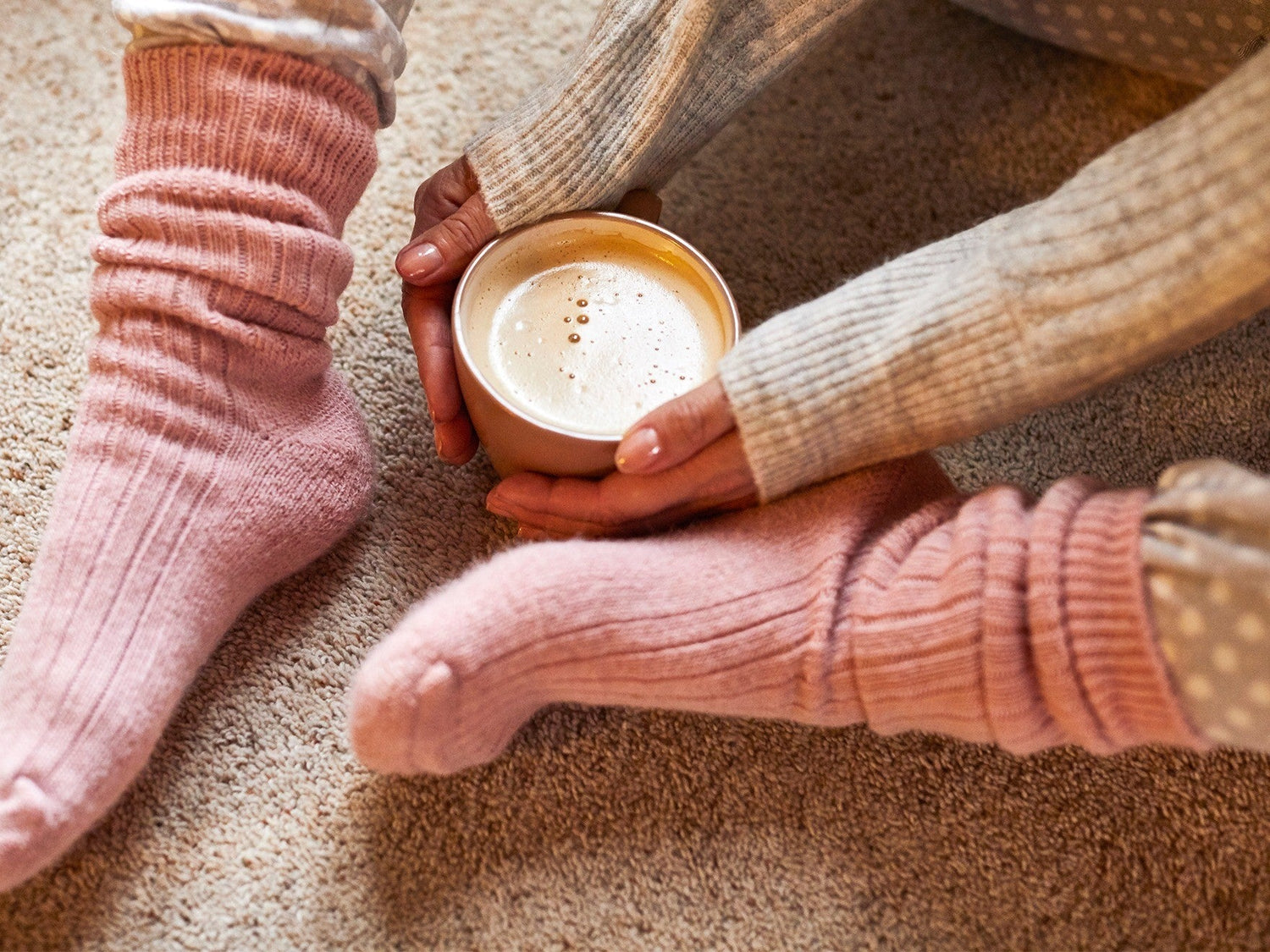The Ultimate Guide to Hiking Sock Selection for Beginners 2025
Imagine lacing up your boots for your very first hike, only to find your feet aching, sweaty, and covered in blisters just a few miles in. For many beginners, the wrong hiking sock can turn an exciting adventure into an uncomfortable ordeal.
Choosing the right hiking sock is more than a small detail—it’s the foundation for happy feet, improved performance, and lasting foot health on the trail. This guide will walk you through everything you need to know to find your perfect pair in 2025.
We’ll break down materials, fit, cushioning, seasonal tips, buying advice, and care essentials so you can hike farther, happier, and pain-free.
Why Hiking Socks Matter for Beginners
Imagine finishing a hike with happy feet instead of painful blisters. The right hiking sock can be a game-changer for beginners, offering protection, support, and peace of mind on every trail. Let’s break down why hiking socks are so essential for those just starting out.
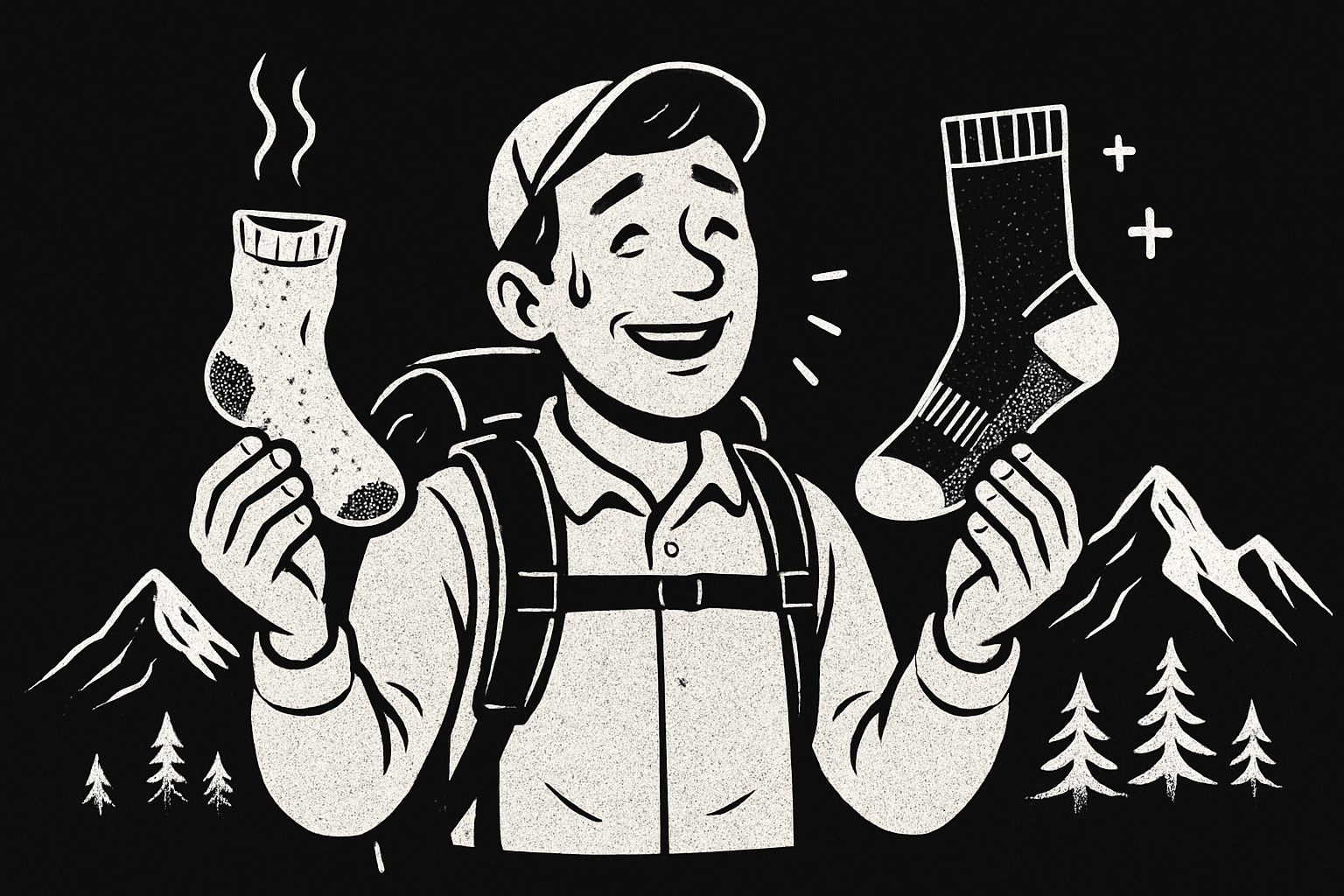
Preventing Blisters and Foot Injuries
Blisters can quickly turn an exciting adventure into a miserable ordeal. A hiking sock is designed to reduce the friction and moisture that often cause blisters on the trail. Did you know up to 60% of hikers experience blisters simply because they picked the wrong socks? That’s a huge number for something so preventable.
Many beginners report instant relief after switching from regular socks to a hiking sock with proper padding and seamless toes. For more guidance on avoiding blisters and picking the right pair, check out Choosing the Right Hiking Socks.
Moisture Management and Temperature Control
Keeping your feet dry is non-negotiable on any hike. The hiking sock uses technical fibers to wick sweat away and regulate temperature, keeping your feet comfortable in all conditions. Unlike cotton socks, which trap moisture and create a breeding ground for blisters and fungal infections, a hiking sock helps you stay cool in the summer and warm in the winter.
Smart material choices in a hiking sock can mean the difference between a pleasant trek and a soggy, uncomfortable walk. Beginners quickly notice the benefits when their feet remain dry, even after miles on the trail.
Enhancing Comfort and Support
Trail comfort isn’t just about your boots—it starts with your hiking sock. Targeted cushioning in a hiking sock absorbs impact, while arch support helps you handle longer distances without fatigue. Beginners often complain of “hot spots” or pressure points, but the right hiking sock can reduce these issues dramatically.
With a hiking sock designed for support, you’ll find your endurance improves, and those little aches and pains become a thing of the past. It’s a simple upgrade that delivers a big payoff in comfort.
Durability and Value
A hiking sock is built to last, even on rugged trails and after countless washes. Investing in quality socks means fewer replacements and less money spent on foot care down the line. While the price tag might seem higher at first, the cost-per-wear is much lower compared to cheap, easily worn-out alternatives.
Durability also means your hiking sock won’t lose its shape or cushioning after a few uses. For beginners, this reliability is key—your feet deserve gear that goes the distance.
Psychological Benefits
The right hiking sock doesn’t just protect your feet; it boosts your confidence. Knowing your feet are supported and comfortable lets you focus on enjoying the journey, not worrying about every step. Reliable gear, including a quality hiking sock, can transform your outlook and motivation for future hikes.
For beginners, this mental edge is invaluable. When you trust your hiking sock, you’re free to push farther, explore more, and truly enjoy the outdoors.
Understanding Hiking Sock Materials
Choosing the right hiking sock material is the foundation for a comfortable and rewarding hike. Each fabric offers unique benefits and drawbacks. Understanding these differences helps beginners make an informed decision—so your feet stay happy mile after mile.
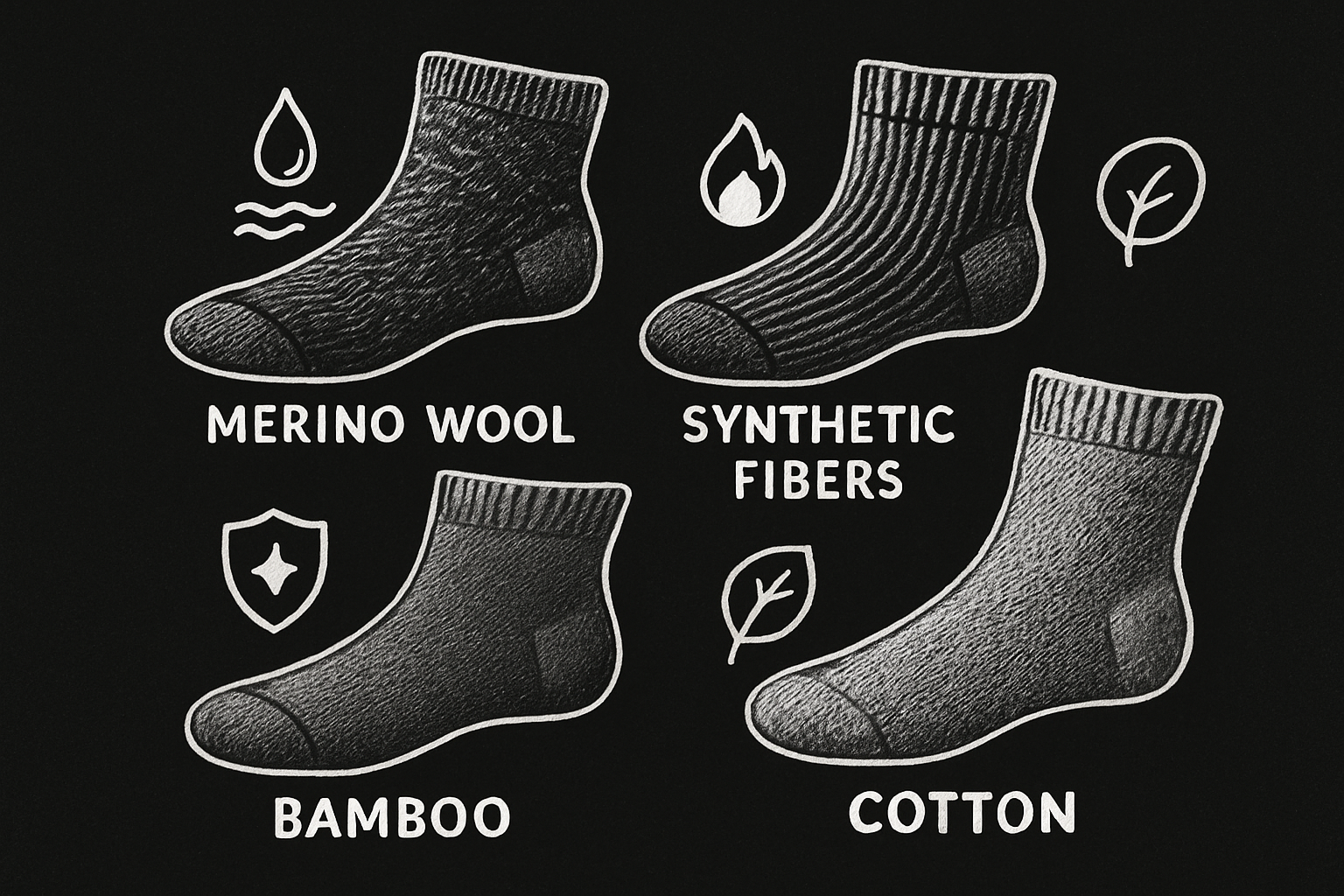
Merino Wool: The Gold Standard
Merino wool is often considered the gold standard for hiking sock materials. Its natural fibers insulate even when wet, wick moisture away from the skin, and resist odor for days on the trail. In fact, merino wool can absorb up to 30% of its own weight in moisture before feeling damp.
Many beginners and seasoned hikers alike prefer merino wool for its comfort and adaptability. According to experts, merino is ideal for regulating temperature in a wide range of conditions. For a deeper dive into why merino excels at moisture control and odor management, check out Merino Wool's Moisture-Wicking Properties.
If you want a hiking sock that performs across seasons, merino is a top pick.
Synthetics: Polyester, Nylon, and Blends
Synthetic fibers like polyester and nylon are engineered for durability and quick drying. These materials excel at moving sweat away from your skin, helping to keep blisters at bay. Synthetic blends also tend to be more abrasion-resistant, making them a smart choice for rugged trails.
A hiking sock made with synthetics is often lighter and dries faster than wool, which is especially beneficial for warm-weather hikes or when you need to wash and dry socks overnight. However, synthetics may not offer the same odor resistance as natural fibers.
Many affordable hiking sock options use synthetic blends, balancing cost, comfort, and performance.
Bamboo and Other Eco-Friendly Options
Bamboo fiber is gaining popularity for hikers seeking a soft, sustainable alternative. Bamboo is naturally antibacterial, helping reduce foot odor, and its production has a lower environmental impact compared to traditional materials.
A hiking sock made from bamboo feels silky and breathable, making it a great option for those with sensitive skin or allergies. Other eco-friendly materials, like recycled polyester or organic cotton blends, are also emerging as ethical choices.
While bamboo socks may not be as durable as wool or synthetics, they offer a unique combination of comfort and sustainability.
Cotton: Why It’s Not Recommended
Cotton is a staple in everyday socks, but it’s a poor choice for hiking sock construction. Cotton fibers absorb and hold onto moisture, increasing the risk of blisters, cold feet, and even fungal infections on the trail.
The hiking community often repeats the mantra “cotton kills” because wet cotton socks can sap heat from your feet and cause discomfort quickly. Even short hikes can become miserable if you’re wearing cotton.
For safety and comfort, always avoid cotton when selecting a hiking sock for outdoor adventures.
Thickness and Fabric Weight Considerations
The thickness and weight of your hiking sock impact breathability, warmth, and overall comfort. Lightweight socks are best for summer hikes and high-output activities, while midweight and heavyweight options provide insulation for cooler weather or long treks with heavy packs.
Matching the thickness of your hiking sock to trail conditions and personal preference is key. Thicker socks offer more cushioning but may reduce breathability, while thinner socks prioritize ventilation.
A good rule of thumb: bring a few options and test what works best with your hiking footwear.
Innovations for 2025
The hiking sock industry continues to evolve, with 2025 bringing exciting advancements. Look for socks made with recycled materials, seamless construction to reduce friction, and smart fabrics that adapt to temperature changes.
Some new hiking sock designs feature targeted ventilation zones, reinforced stress points, and eco-friendly dyes. As sustainability becomes a bigger focus, brands are prioritizing lower-impact production and biodegradable packaging.
Investing in an innovative hiking sock ensures both comfort and environmental responsibility for your next adventure.
Sizing, Fit, and Cushioning: Getting It Right
Finding the perfect hiking sock is about more than picking a color or brand—it’s about tuning into the details that keep your feet happy on every trail. The right size, fit, and cushioning can mean the difference between a memorable adventure and a day cut short by discomfort. Let’s break down what beginners need to know to get it right.
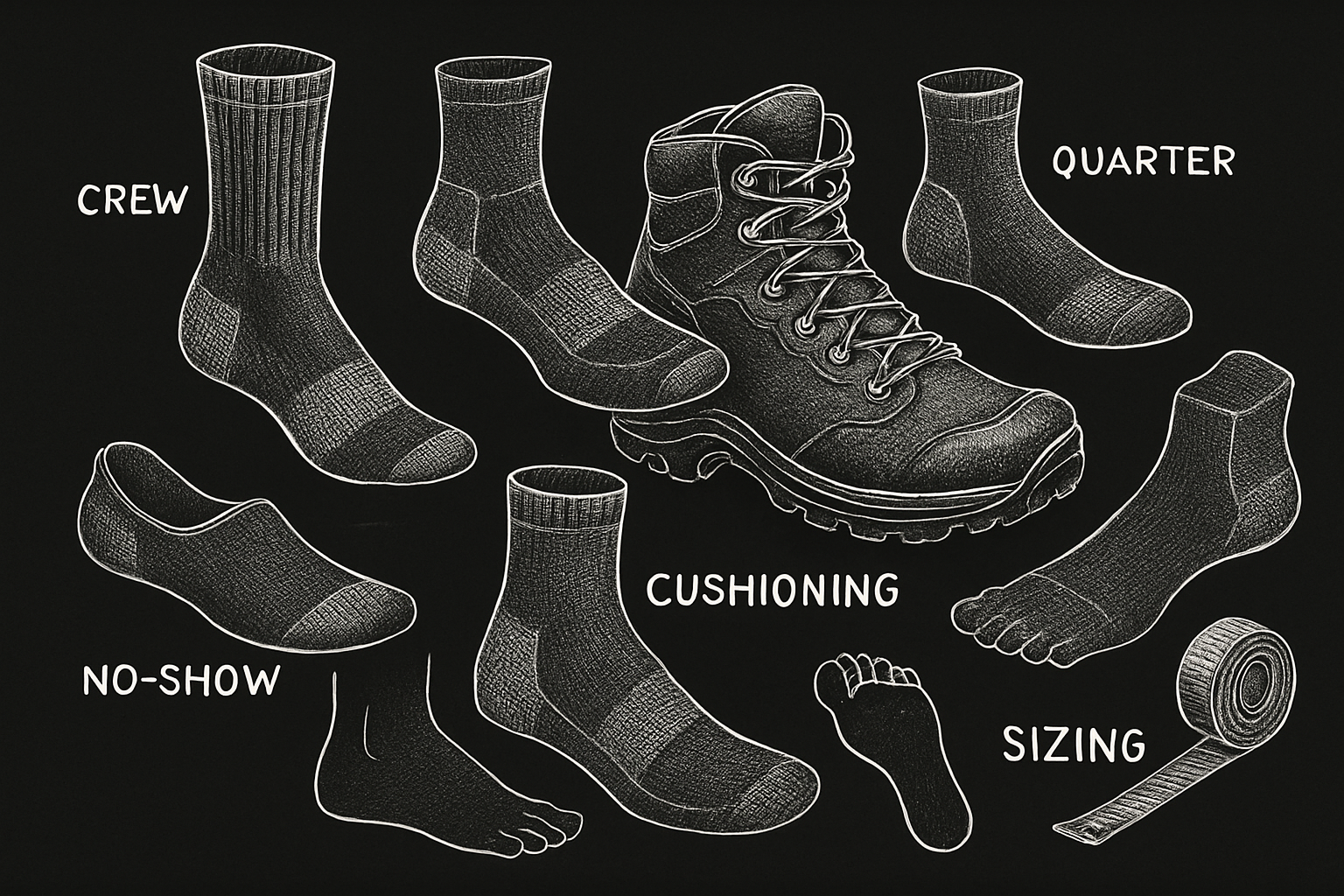
How to Choose the Correct Size
Selecting the right size hiking sock is your first defense against blisters and bunching. Begin by measuring your foot length and checking the manufacturer’s sizing chart—these can vary widely between brands.
Try on socks with your hiking shoes to ensure there’s no excess fabric at the heel or toes. A good hiking sock should hug your foot comfortably, without slipping or feeling constrictive. If you fall between sizes, opt for the smaller one, as most technical socks have some stretch. Remember: a precise fit is essential for a blister-free hike.
Sock Height: Crew, Quarter, and No-Show Options
Height matters when choosing a hiking sock. The three main options are:
- Crew: Covers the ankle and lower calf, ideal for boots and rugged terrain.
- Quarter: Sits just above the ankle for lighter shoes or moderate trails.
- No-show: Barely peeks above the shoe, best for low-cut trail runners.
Choose a sock height that matches your footwear and trail conditions. Crew socks provide extra protection from debris and brush, while no-show designs keep things cool on easy, dry paths. Your choice should balance comfort with coverage for your hiking sock needs.
Cushioning Levels Explained
Cushioning in a hiking sock affects both comfort and performance. The main levels are:
- Light cushioning: Best for warm weather and short hikes.
- Medium cushioning: Versatile for most day hikes and moderate loads.
- Heavy cushioning: Suited for cold weather, long treks, or heavy packs.
Consider your typical hike’s duration, pack weight, and terrain when selecting cushioning. For in-depth comparisons of top models and their cushioning, check out this Best Hiking Socks of 2025 guide. Matching your hiking sock’s padding to your adventure ensures every step feels just right.
Gender-Specific and Anatomical Fits
Hiking sock brands often offer gender-specific and anatomical designs. Women’s socks typically feature a narrower heel and slimmer fit, while men’s versions are wider.
Some socks are labeled “left” and “right” to match your feet’s contours. These anatomical fits reduce bunching and enhance support. When browsing, look for these features to get a hiking sock that feels tailor-made for you.
Trying Socks with Your Hiking Shoes
Always test new hiking socks with your actual hiking shoes before hitting the trail. Walk around indoors to check for any slipping, tight spots, or bunching.
If shopping in-store, bring your hiking shoes for an accurate fit check. When buying online, try socks at home and take advantage of return policies if the fit isn’t perfect. The right hiking sock should work seamlessly with your footwear, setting you up for endless comfortable miles.
Seasonal and Trail Considerations
Choosing the right hiking sock for each season and trail is essential for comfort and protection. Beginners often overlook how much the environment can impact your feet, but selecting socks tailored to the conditions will keep you on the trail longer.
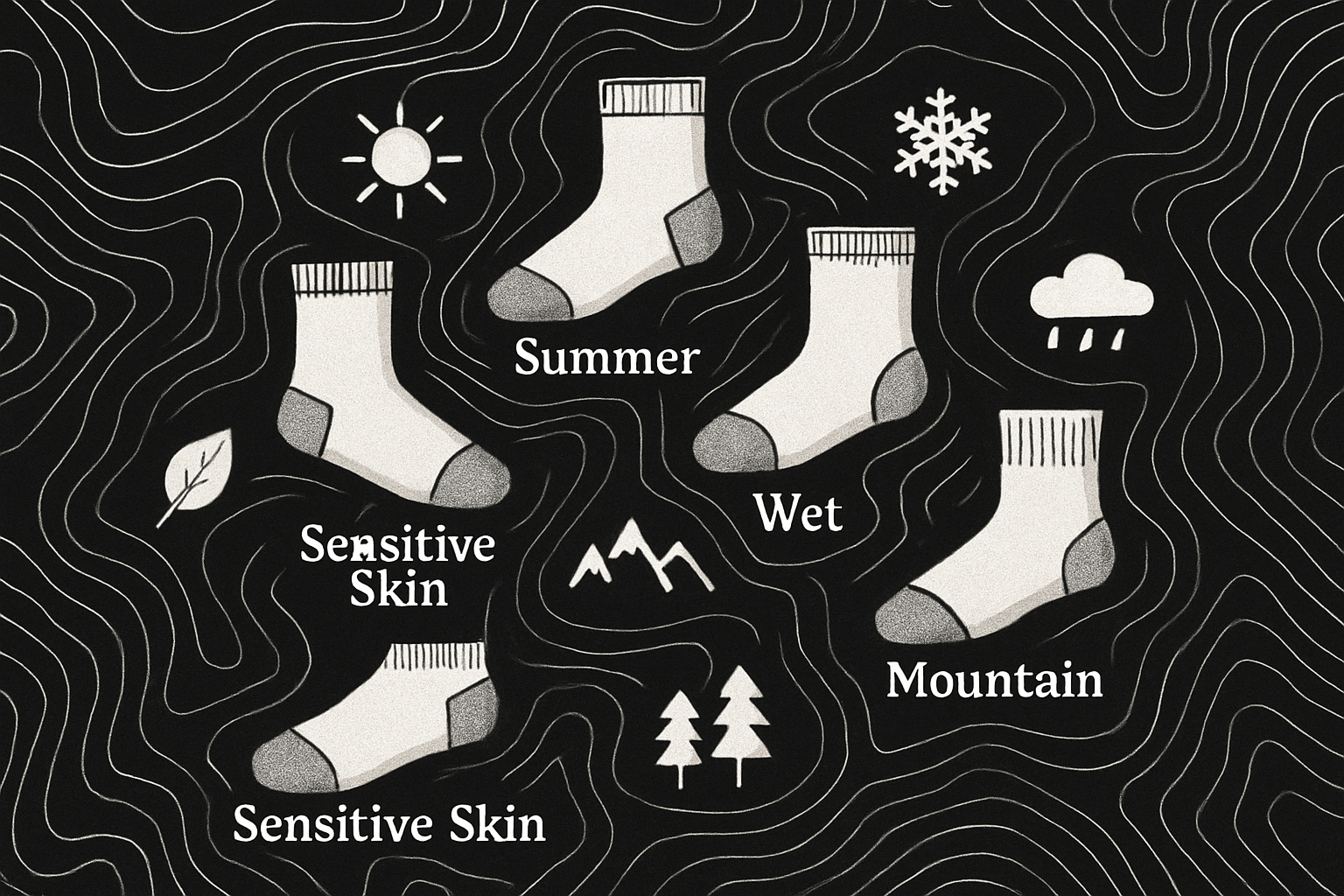
Summer Hiking: Staying Cool and Dry
When temperatures rise, your hiking sock needs to prioritize breathability and moisture control. Lightweight merino wool or synthetic blends excel at wicking sweat away, keeping feet cool and reducing the risk of blisters.
Look for socks with mesh ventilation zones and minimal cushioning to maximize airflow. Opt for low to mid-calf heights, which balance protection with heat management. Avoid thick socks, as they trap heat and moisture. A thin hiking sock designed for summer will help prevent chafing and hot spots, making every step more enjoyable.
Winter and Cold-Weather Hiking: Insulation Matters
Cold weather demands a hiking sock built for warmth and insulation. Thick merino wool socks are a top choice, offering natural heat retention and moisture-wicking even in freezing conditions. Some hikers prefer layering a thin liner sock under a heavier pair for extra insulation and blister prevention.
Medium to heavy cushioning adds comfort and protects against cold ground. Choose socks that extend above the ankle to seal out snow and debris. The right hiking sock for winter will keep your feet warm, dry, and ready to tackle frosty trails.
Wet and Muddy Trails: Waterproof and Quick-Dry Options
Rain, streams, and mud require a hiking sock that dries fast and resists water retention. Synthetic fibers like polyester and nylon are ideal for these conditions, as they shed moisture and maintain comfort even when wet. For more details on their benefits, check out this guide to Synthetic Fibers in Hiking Socks.
Consider waterproof sock liners or double-sock systems for added protection. Reinforced heels and toes also help prevent wear from abrasive, muddy terrain. A quick-drying hiking sock will minimize the risk of blisters and keep your feet healthy on soggy adventures.
Mountain vs. Forest vs. Desert Trails
Trail environment should guide your hiking sock selection. For rocky mountain paths, choose socks with extra cushioning and higher cuts to shield against sharp debris. Forest trails may call for medium-thickness socks with strong arch support to handle uneven ground and roots.
Desert hiking demands thin, breathable hiking sock options that can manage sand and intense heat. Always match sock thickness and height to the terrain and your footwear for optimal comfort and protection.
Dealing with Allergies and Sensitive Skin
Sensitive skin or allergies require a hiking sock made from hypoallergenic materials. Merino wool and bamboo are gentle options, naturally resisting bacteria and odors. Seek seamless construction to reduce irritation and friction.
If you react to dyes or synthetic fibers, look for undyed or organic hiking sock choices. The right sock will prevent rashes and keep your focus on the trail, not your feet.
How to Shop for Hiking Socks: Tips for Beginners
Shopping for the right hiking sock can feel overwhelming with so many options on the market. As a beginner, focusing on a few key factors will help you make a smart choice and avoid common mistakes on the trail.
Key Features to Look For
When choosing a hiking sock, prioritize features that boost comfort and durability. Look for reinforced heels and toes to prevent premature wear during long hikes. Seamless toes help reduce friction, cutting down on the risk of blisters.
Arch support is another important factor, as it can help minimize foot fatigue. Ventilation zones, often made from mesh panels, improve breathability and keep your feet dry. Consider which features matter most for your hiking goals, such as extra cushioning for rocky trails or lighter socks for summer treks.
Reading Reviews and Sizing Guides
Before buying a hiking sock, take time to read both user reviews and expert recommendations. Real-world feedback often highlights comfort, fit, and long-term durability. Consulting sizing guides is essential, as each brand may have its own fit standards.
Check for detailed brand-specific charts and, if possible, measure your feet to find the best match. For trusted insights, you might visit OutdoorGearLab’s hiking sock reviews. Combining reviews with sizing information increases your chances of a perfect fit.
Trying Before You Buy: In-Store vs. Online Shopping
Deciding where to buy your hiking sock depends on your preferences. Shopping in-store lets you feel materials and try socks with your hiking boots, making it easier to judge comfort and fit firsthand.
Online shopping offers a wider selection and often better prices, but it’s important to check return and exchange policies. If a pair doesn’t fit right, knowing you can return it gives peace of mind. Always test socks at home with your hiking shoes before hitting the trail.
Budgeting for Quality
Quality matters when it comes to hiking sock selection. While entry-level socks may cost $10–$15 per pair, premium options can reach $25 or more. Premium socks often last longer, providing better value over time.
| Price Range | Expected Lifespan | Cost Per Hike (Est.) |
|---|---|---|
| $10–$15 | 1–2 seasons | $0.25–$0.40 |
| $20–$25+ | 3–4 seasons | $0.12–$0.20 |
Investing in a higher-quality hiking sock can actually save money by reducing replacements and preventing foot issues.
When to Replace Your Hiking Socks
Even the best socks wear out. Check for thinning fabric, stretched-out elastic, or holes, especially in high-friction areas. A hiking sock that no longer offers support or cushioning should be replaced.
On average, hiking socks last from one to four seasons depending on material and usage. Swapping out worn pairs keeps your feet protected and your hikes enjoyable.
Caring for Your Hiking Socks: Maintenance and Longevity
Keeping your hiking sock collection in top shape ensures comfort, durability, and value on every adventure. A little extra care goes a long way, whether you’re prepping for a weekend trek or a multi-day expedition.
Washing and Drying Best Practices
Proper cleaning is essential for extending the life of any hiking sock. Always check the care label first. Most technical socks prefer cold or warm water and a gentle cycle.
Use mild detergent and skip fabric softeners, which can break down fibers and reduce moisture-wicking. For drying, air-drying is best to maintain elasticity and prevent shrinkage. If you must use a dryer, choose the lowest heat setting to protect your hiking sock investment.
Storage and Packing Tips
Storing your hiking sock pairs correctly keeps them ready for action. Fold them flat instead of rolling into a ball, which can stretch the cuffs and weaken the material over time.
For multi-day hikes, pack socks in breathable mesh bags to keep them dry and organized. This method helps you quickly rotate pairs and avoid losing a hiking sock deep in your backpack.
Repairing Minor Damage
Small holes or thinning spots don’t always mean it’s time to toss your favorite hiking sock. Use a needle and thread to patch minor damage, especially in the toe or heel area. There are simple repair kits made specifically for socks and outdoor gear.
If the damage is extensive, it’s safer to retire the sock to prevent blisters or discomfort. Remember, a quick fix can help you get a few more miles out of a reliable hiking sock.
Extending Sock Life on the Trail
On longer treks, rotating your hiking sock pairs each day keeps them fresher and reduces wear. Change socks at lunch or rest stops to keep feet dry and comfortable.
After use, hang socks to air out whenever possible. If you encounter rain or streams, pack a spare hiking sock set in a waterproof bag to avoid dampness and maintain performance.
Environmental Considerations
When it’s finally time to say goodbye, consider recycling your old hiking sock instead of tossing it in the trash. Some brands offer take-back programs or partner with textile recycling initiatives. Look for labels that highlight sustainable materials and ethical production.
Choosing a hiking sock from eco-friendly companies not only protects your feet but also the planet. For more on sustainable gear options, check out REI’s guide to eco-friendly hiking socks.
